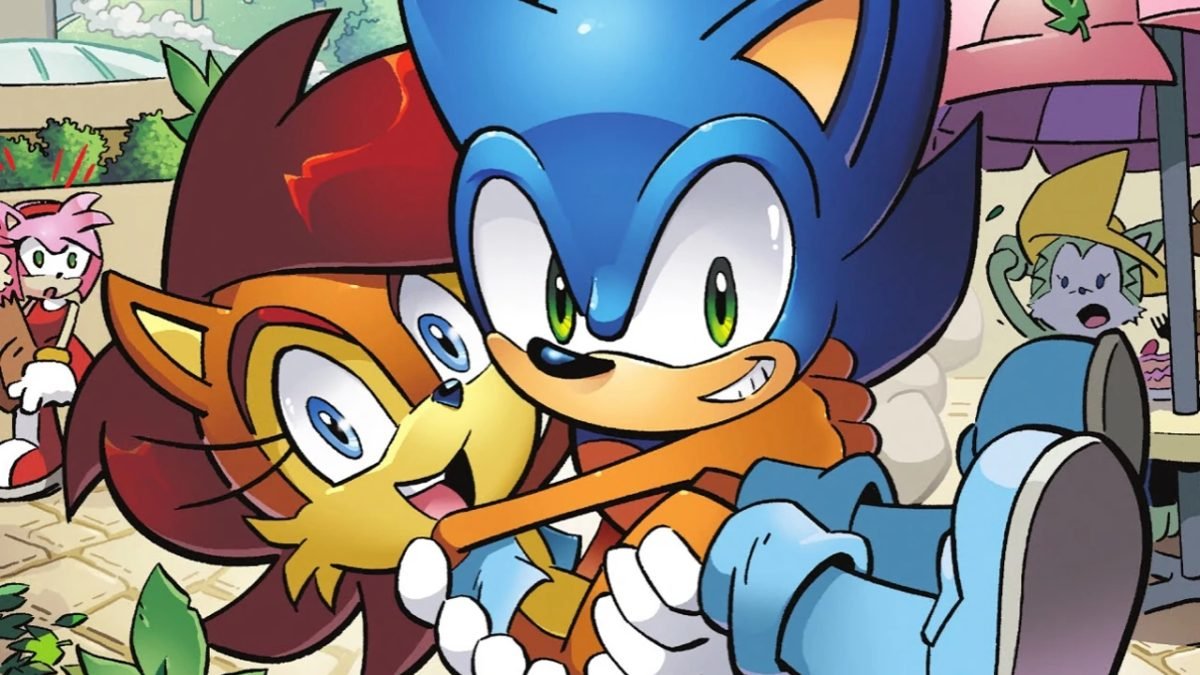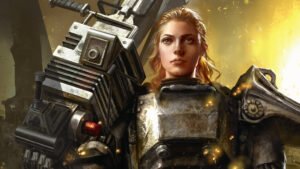As Sonic the Hedgehog 2 races into theatres this weekend, join us for a trip down memory lane to revisit some defining traits of his long-running Archie Comics series.
Media tie-ins have become an incredibly common thing in our modern age, turning a simple intellectual property into a multimedia campaign. From Horizon: Forbidden West and Halo to Star Wars and Mario, and even podcasts based on Dungeons & Dragons campaigns, there are a plethora of ways to enjoy a beloved franchise outside of its main context. But this wasn’t always the case.
Nintendo and Sega both tried to turn their most successful games into merchandise-dispensing machines during the early 90s, but Sonic the Hedgehog arguably had the greatest success. In conjunction with the popular Saturday morning cartoon (starring Jaleel White as Sonic), Archie Comics launched a miniseries based on the Blue Blur in 1993. It was so successful it was extended into an ongoing series; spawned multiple special event issues, crossovers, and spin-off series; and became the longest-running comic based on a game. If not for licensing issues, it might still be in print today.
Archie’s Sonic comic empire was remarkable—not only for enduring generational shifts and the dwindling success of its source material, but for how it interacted with and enriched that material. So grab a chili dog and join us as we go fast back into the past and examine some of the moments and qualities that made Archie Comics’ Sonic the Hedgehog so special.
5) Chaotix
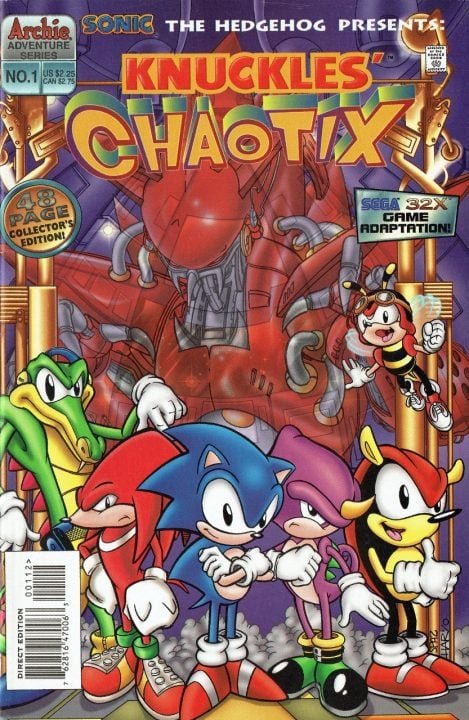
If you were a kid in the early 90s, you’d be forgiven for not knowing about the 32X add-on for the Sega Genesis, or Knuckles’ Chaotix, the only Sonic game to be released for it. Sega undercut themselves by crisscrossing the launch of the upgrade and their new full-blown console, the Saturn, so Knuckles’ first starring role has been largely lost to the sands of time. Some of his new sidekicks, the Chaotix Crew, would go on to appear in other games like Sonic Heroes and the highly-successful Sonic Mania Plus.
This made the impact of Archie Comics’ Knuckles’ Chaotix adaptation all the more prominent. For many fans at the time, this was the only way to experience the 32X game in any form. This “Super Special” issue of Sonic the Hedgehog, published in January 1996, loosely retold the story and even incorporated the unique “Bound Ring” mechanic, which united the two playable characters chosen for each stage. Given the cartridge’s rarity, this issue remains a more accessible alternative.
The comic provided the same benefit for other games with limited or inaccessible releases, like Sonic CD, but Knuckles’ Chaotix has remained inaccessible, excluded from compilations and shunned from re-release.
4) Tying It All Together
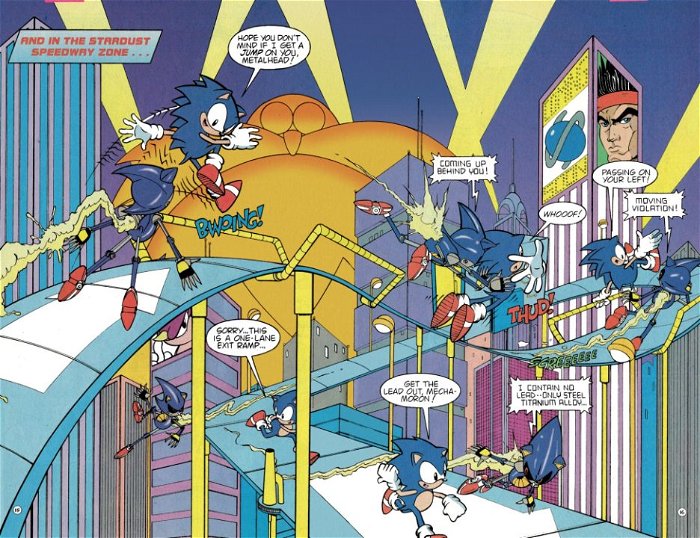
The crossovers from game to comic didn’t stop with ill-fated spin-offs, however. Most of the games released during the series’ lifetime were brought into the Archie Sonic the Hedgehog continuity, even if it was done retroactively—from Sonic Spinball, to Sonic Adventure and Sonic Colors. In fact, the final storyline of the comic was a fresh adaptation of the original trilogy and Sonic CD.
What was remarkable, at least in the earlier years, was how these events would have meaning to the larger continuity. The creative team rolled with what the games’ development teams would provide, finding ways to work those story beats into their own narrative while maintaining the spirit of the game as much as possible. These tie-ins became tentpole moments in the overall continuity, not just a quick way to sell comics on newsstands by slapping a game’s logo on the cover (although that certainly helped).
3) Going Over 9000
Once a secret power and unofficial allusion to Dragon Ball Z‘s Super Saiyans, the Super Sonic transformation is now a core facet of the Blue Blur’s skillset. Since its inception in the Genesis sequel, it’s been the key to obtaining the “true” ending of many games, and by the Adventure series it was required to beat a game outright. Many fellow heroes can access a similar state, varying by game.
Alternately, many games feature a showdown with either Metal or Mecha Sonic in some form—robotic clones of Sonic created by Dr. Robotnik to foil his archnemsis. These antithetical foes generally pose a bigger threat than any of the evil genius’ other creations.
So naturally, you can beat Archie’s Sonic the Hedgehog run leaned heavily into both of these motifs, the ultimate foils and power fantasies from the source material. Sonic transformed into his Super state on many momentous occasions—like battling “Hyper Knuckles” in a Super Special issue—while robotic versions of him popped up regularly. The comics expanded the lore of both states, and further elaborated on Robotnik’s practice of “Roboticizing” animals, like Sonic’s ally Bunnie Rabbott.
Again, these stories benefitted the games in turn. If you hadn’t heard the secret of turning Super Sonic from friends on the playground, you might have learned about it from the adaptations.
2) Expanding Knuckles and the Echidna Culture

If any character benefitted from the comic run, it’s probably Knuckles the Echidna. Sonic The Hedgehog had a huge cast of supporting characters, originally stemming from that original Saturday morning cartoon. His buddy Tails and Princess Sally Acorn each received their own starring roles in miniseries events, but Knuckles’ bonus stories and 3-issue miniseries in 1996 led to his own full-fledged series, running alongside the main title from 1997 to 2000.
Knuckles the Echidna was a slighter darker counterpart to the main series, and established a richer lore for the Echidnas, the Floating Island, and the Chaos Emeralds. In many ways, it likely helped contribute to the lasting appeal of the character; while other side-characters and “friendly rivals” have come and gone, Knuckles remains a fairly constant element in new iterations of Sonic, like the Sonic Boom series and even the new movie, where he’s voiced by Idris Elba.
1) More Than a Catch-Phrase
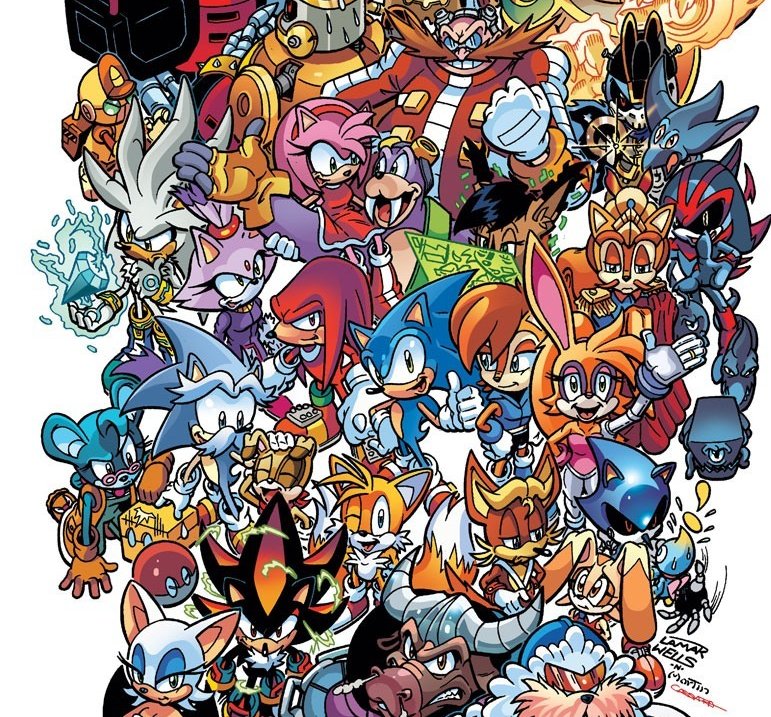
Sonic the Hedgehog was originally concocted as a joint venture between Sega and its American satellite office in an attempt to compete with Nintendo. The games themselves proved a worthy adversary for Mario for most of the 90s, while neither mascot could sustain a cartoon at the time. Yet Sonic the Hedgehog succeeded where Nintendo failed: by adding true, authentic depth to the titular character and their world.
By engaging with the source material and enriching it with a whole new background world, Archie Comics’ tie-in empire became the most consistent version of Sonic’s lore. Even more impressive, it retained a relative amount of consistency over 24 years, 290 issues, dozens of specials and miniseries, one major shift in the creative team, and two or three soft resets—a feat that few other publishers have ever pulled off. Even Sonic’s games were less coherent in the same span, and their stories were threadbare by comparison.
Sonic the Hedgehog could have been another one-note mascot character from video gaming’s adolescence, but this rich comic world truly helped him overcome that fate.
And that concludes our brief look at the legacy of Archie Comics’ Sonic the Hedgehog empire. IDW took over the license in 2018 with Ian Flynn returning to his role of head writer, a post he took up after the controversial departure of former lead Ken Penders. Unfortunately this has made the old series more difficult to find unless you’ve kept a longbox full of back issues since you were a kid; it’s currently unavailable on digital platforms, while it’s not uncommon for online auctions for single issues to start in double-digits.
If you’re someone who grew up with the comics, or just caught Sonic-mania back then, it might still prove worthwhile to hunt down some old issues. Overall, Sonic the Hedgehog remains remarkably readable even now, aside from some dated cultural references, and would be great to share with a new generation.
